
- •History Painting (Istoria)
- •Twentieth Century and modern times
- •In Italy realism in portrait painting was extended by Filippo Lippi and Raphael.
- •Genre Painting
- •History of Genre painting
- •Famous Genre painters
- •The main characteristics of genre painting:
- •K. Brullov a Nun's Dream
- •F. Zhuravlyov Returning From the Ball
- •N. Yaroshenko Saw Off
- •Vedute is the Italian term for view, and generally used for the painted landscape, often cityscapes which were a common 18th century painting thematic.
The main characteristics of genre painting:
Genre paintings tell us about different people’s work and life conditions.
It is a story not about a particular person but about a typical, generalized character.
The subject matters of g.p. can be simple and complicated. Simple subject matters are deprived of developing action, inner conflict, the emotions are rather simple also. A complicated subject matter always combines a serious conflict, contradiction.
A painter depicts only one moment of life but we perceive it as a long lasting event, we imagine the previous and the next events.
Colouring in g.p. helps to expose the centre of the composition where the colours are much brighter and attract a viewer’s attention. Besides, colouring also has an influence on our thoughts, feelings, mood, provokes different associations.
The most important idea in g.p. is depicting the true of life.
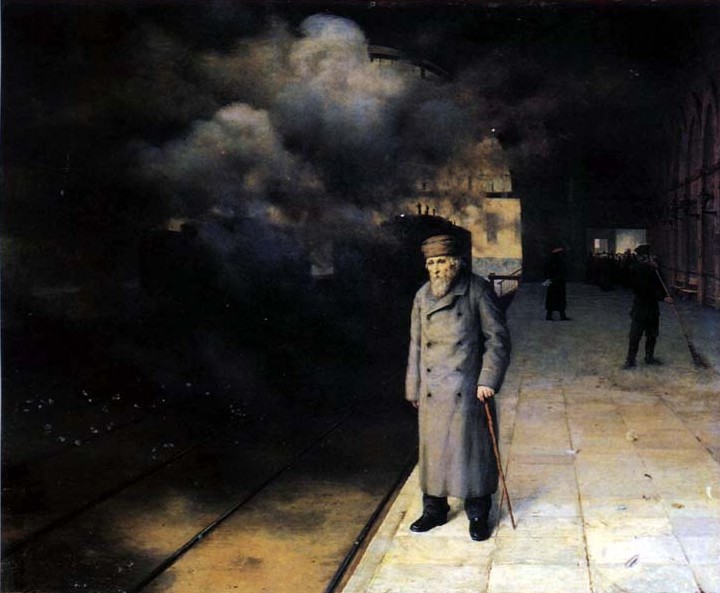
K. Brullov a Nun's Dream
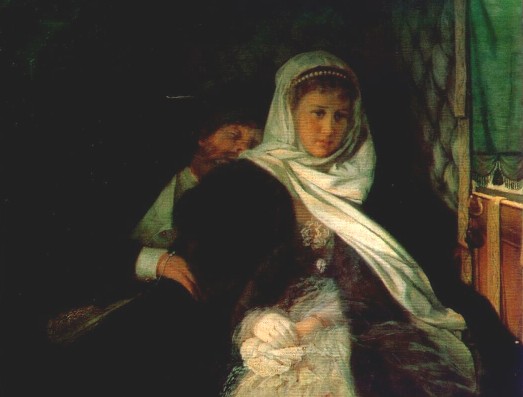
F. Zhuravlyov Returning From the Ball
N. Yaroshenko Saw Off
Still life
It can be found in the XV-XVI centuries, for a long time still life remained relationship with a religious painting, framing flower garlands the figure of the Virgin Mary and Christ, and often are situated on the reverse side of the altar of the image ( as in “Triptich family marriage” by Rogier Van Der Weyden).
In the XVI century there was tradition to create portraits with a skull, for concealment of the wall niche.

Still life completely took shape as an independent genre of painting in the works of Dutch and Flemish artists of the XVII century. Subjects in the painting often contain hidden allegory – or the transience of all earthly things and the inevitability of death.
Dutch still life of the XVII century.
It was a unique cultural phenomenon of the XVII century, which showed attention on the further development pf the whole European painting. Dutchmen reflected in their works the world of objects, living their quiet frozen lives. The term “frozen life” began to be used to describe the genre in the middle of the XVII century, in the Netherlands.
Flower life
Begins with the 40s of the XVII century, still life painting in the Netherlands became spread as a separate genre. The reasons for the popularity of flower life can be found in the peculiarities of the Netherlands Society of everyday life – the tradition of gardens, country houses and plants – as well as favorable natural condition for development of floriculture.
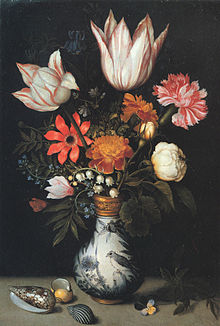

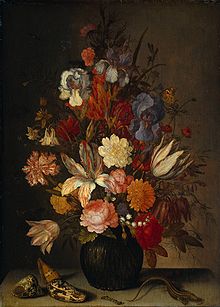
Scientist still life
Genre of scientist here still life gets the name of “vanity” or “memento more” and is the most intelligent kind of still life, which requires knowledge of the Bible from the viewer and the traditions of religious symbols. Often in the still lifes in this direction there illusions methods, creating a subtle optical illusion. These still lifes were especially prevalent in the middle of XVII century and gained incredible popularity in the country and abroad.
Still life in Russian painting of the XVIII – XX centuries
It as an independent genre of painting appeared in Russia at the beginning of the XVIII century. The idea of it was originally associated with the image of the gifts of land and sea, diverse world of things surrounding the person, In contrast to the portrait and history painting, regarded as “interior” genre. It existed as a teaching statement and was allowed only in a limited sense as painting flowers and fruit.

Types and still life masters Netherlands:
Early Floral Still life
Tone still lifes
Illusions still life
4. Luxury still life
Late still life
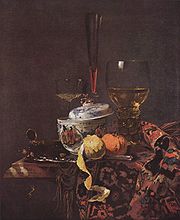

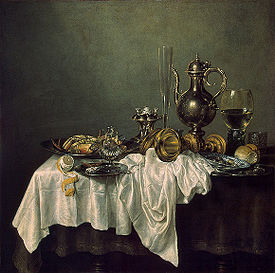
Landscape art is a term that covers the depiction of natural scenery such as mountains, valleys, trees, rivers, and forests, and especially art where the main subject is a wide view, with its elements arranged into a coherent composition. In other works landscape backgrounds for figures can still form an important part of the work. Sky is almost always included in the view, and weather is often an element of the composition. Detailed landscapes as a distinct subject are not found in all artistic traditions, and develop when there is already a sophisticated tradition of representing other subjects. The two main traditions spring from Western painting and Chinese art, going back well over a thousand years in both cases.Landscape photography has been very important since the 19th century, and is covered by its own article.
The word landscape is from the Dutch, landschap originally meaning a patch of cultivated ground, and then an image. The word entered the English language at the start of the 17th century, purely as a term for works of art; it was not used to describe real vistas before 1725. If the primary purpose of a picture is to depict an actual, specific place, especially including buildings prominently, it is called a topographical view. Such views, extremely common as prints, are often seen as inferior to fine art landscapes, although the distinction is not always meaningful
Most early landscapes are clearly imaginary, although from very early on townscape views are clearly intended to represent actual cities, with varying degrees of accuracy. Various techniques were used to simulate the randomness of natural forms in invented compositions: the medieval advice of Cennino Cennini to copy ragged crags from small rough rocks was apparently followed by both Poussin and Thomas Gainsborough, while Degascopied cloud forms from a crumpled handkerchief held up against the light. The system of Alexander Cozens used random ink blots to give the basic shape of an invented landscape, to be elaborated by the artist.
The Chinese ink painting tradition of shan shui ("mountain-water"), or "pure" landscape, in which the only sign of human life is usually a sage, or a glimpse of his hut, uses sophisticated landscape backgrounds to figure subjects, and landscape art of this period retains a classic and much-imitated status within the Chinese tradition.
Both the Roman and Chinese traditions typically show grand panoramas of imaginary landscapes, generally backed with a range of spectacular mountains – in China often with waterfalls and in Rome often including sea, lakes or rivers. These were frequently used, as in the example illustrated, to bridge the gap between a foreground scene with figures and a distant panoramic vista, a persistent problem for landscape artists. The Chinese style generally showed only a distant view, or used dead ground or mist to avoid that difficulty.
A major contrast between landscape painting in the West and East Asia has been that while in the West until the 19th century it occupied a low position in the accepted hierarchy of genres, in East Asia the classic Chinese mountain-water ink painting was traditionally the most prestigious form of visual art. Aesthetic theories in both regions gave the highest status to the works seen to require the most imagination from the artist. In the West this was history painting, but in East Asia it was the imaginary landscape, where the most famous practitioners were, at least in theory, amateur literati, including several Emperors of both China and Japan. They were often also poets whose lines and images illustrated each other. However in the West, history painting came to require an extensive landscape background where appropriate, so the theory did not entirely work against the development of landscape painting – for several centuries landscapes were regularly promoted to the status of history painting by the addition of small figures to make a narrative scene, typically religious or mythological.
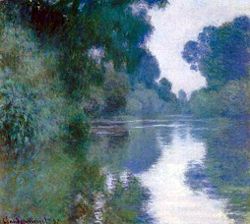 Claude
Monet, Branch
of the Seine near Giverny, 1897.
The Impressionists often,
though by no means always, painted en
plein air.
Claude
Monet, Branch
of the Seine near Giverny, 1897.
The Impressionists often,
though by no means always, painted en
plein air.
Traditionally, landscape art depicts the surface of the earth, but there are other sorts of landscapes, such as moonscapes.
